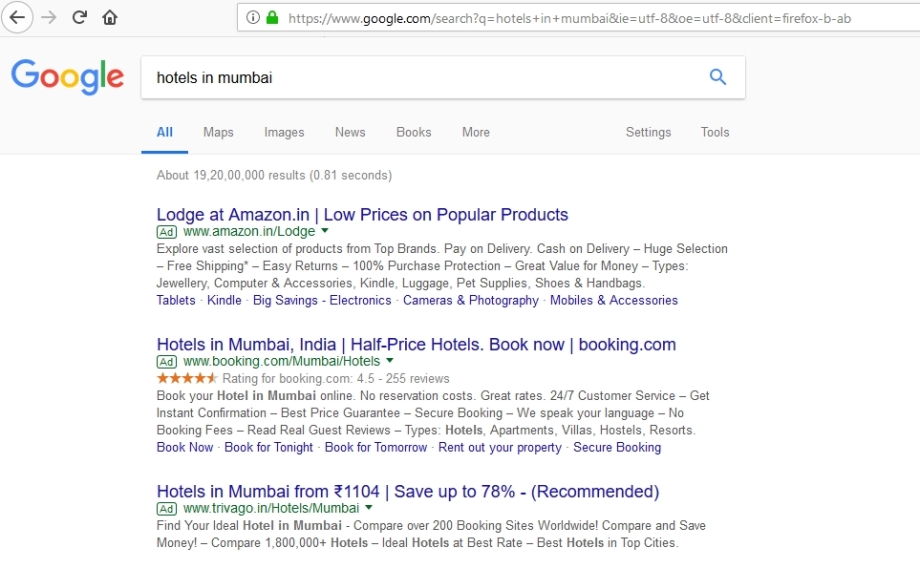
Hello Everyone,
I know you all have waited since long for this, many followers asked me about my next blog. …. finally I got a chance to write a new blog!
In my past two blogs, I tried to cover Basic Fundamentals of Revenue Management and Functions of a Revenue Manager (RM). The discussed Revenue Management techniques are very detailed and the blogs elaborate each attribute separately with the process as listed below.
- Product Knowledge
- Services Offered – Categories & level of satisfaction
- Market Demand Supply Ratio
- Market Competition / Market penetration Index
- Market Segments for your product Vs Comp set
- End Customer – his behavior & booking pattern
- Rate Analysis – Demand Forecasting
- Cost Analysis – Operating Cost
In this blog we will study the opportunities to optimize Revenue by exploring relevant sources & how does it help in developing a Brand.
To succeed in our life we always need support from our family, friends, colleagues and well-wishers. Similarly, Revenue Management alone cannot achieve the desired goals to optimize a hotel’s Revenue. It is necessary to have a good connect with the following factors:
Brand Reputation Management (ORM – Online Reputation Management):
Today’s world has witnessed a very fast upgrade in technology with superfast connectivity. The world has come closer and various platforms are now open to share your views about a product / place. Thus, the term Online Reputation Management is now getting famous in the hospitality industry. The most important aspect of getting business is your Market Reputation in hotels. It gets defined by the Guest feedback / Reviews on various online channels. The value of a hotel brand is also counted by the efficiency to resolve issues by directly contacting guest and how quickly you revert with management response for each guest review (counted as Response Rate & Time). In few cases, A guest can register an online complaint even during his stay in the hotel and a few hotels are very prompt in resolving these issues immediately in order to create a better Guest Satisfaction Standard. It’s all about the coordination of Revenue Manager with hotel Operations team and the SOPs followed at the hotel level. A Corporate Revenue Manager ideally keeps a track of response ratio and ratings on various online channels including Tripadvisor, HolidayIQ, Google, Social Media, and various OTAs. Today there are some good Reputation Management softwares available in the market which also gives an alert on the GM’s app immediately as soon as a new review gets published. In case of a few OTAs, Reputation – Review Score / Response time is one of the factors of algorithm for ranking. Not to mention better the review score, better is the conversion rate.

Role of Brand Website:
It’s recommended to have a user friendly, e-commerce based website for the hotel. Apart from the reason of giving details about the property to the visitors, the main objective of having a hotel website is to generate revenue. No point in having a fantastic website and spending a bomb without any revenue generation. Any hotel website should give as much details as possible. It is a place where a non-verbal sale is taking place. The pages need to be updated regularly. It should also have a booking engine which should be quick, user-friendly, secured, and which helps in optimizing the booking conversion rate. Hotel website is also required for Marketing your hotel online. As per latest technology, it is recommended to have CMS (Content Management System) linked to hotel’s website. It simplifies the task of updating the website pages / content regularly. It’s proven that over 53% of the visitors on your hotel page on other online channels search and visit your website for more details. If you have a good website with Internet Booking Engine it’s likely to materialize guest revenue better than other channel saving commissions / transaction fees to OTAs.

Search Engine Optimization (SEO):
SEO is the process of getting traffic from the free or Organic search results on search engines to your website, Google is having over 90% of Market share hence the focus is always on Google Search Engine. SEO process is generally a lengthy and ongoing process, Google has its own search algorithm, based on which it crawls website data and also your website ranking for particular keywords is decided which is dynamic in nature. SEO is further classified as On-page and off-page SEO. On-page SEO is based on Content, Title Tags, Meta Tags, Alt Tags present on your website whereas Off-page SEO is based on directory submission, articles, media, blogs, 3rd party links etc.
Selection of relevant keywords plays an important role in getting both website traffic and conversion. For example keywords like ‘Hotels near Mumbai Airport’ is more specific for Airport hotels than generic keywords ‘hotels in Mumbai’. The value of those keywords is mainly dependent on the search volume on search engine. Say in above case ‘hotels near Mumbai Airport’ has monthly search volume of 2000 unique searches versus ‘hotels in Mumbai’ has monthly seach volume of 30000 unique searches but for Airport hotels the conversion on ‘hotels near Mumbai Airport’ will be higher than generic keyword ‘hotels in Mumbai’ as in first case the hotel is getting only relevant traffic with higher probability of business materialization.
It’s always advisable to invest some amount of money in ongoing SEO, results won’t be quick but it will give you better ROI in longer run and thus better positioning on Search Engine for relevant keywords.
Below screenshot shows top 5 Organic search results for Hotels in Mumbai in Google.

Social Media Optimization (SMO)
Apart from connecting people, now-a-days social media is also being used to generate hotel bookings. Thus, becoming a new distribution channel for the hotel. Facebook which is the topmost Social Media channel gives opportunity to add hotel’s booking engine directly on your facebook page. For a Hotel Brand today it’s a necessity to be present and active on various social media channels like Facebook, Twitter, Youtube, Instagram, Google+, Linkedin, Pinterest etc. to showcase their Brand, Product, offerings & USP. Each Social Media Channel has its own popularity and clientele. It’s also advisable to do various Marketing campaigns to optimize your direct and indirect sale through these distribution channels.
Digital Marketing:
Digital marketing is the marketing of products or services using digital technologies, mainly on the Internet, but also including mobile phones, display advertising, and any other digital medium.
1. Search Engine Marketing (SEM)
Part of digital marketing, but restricted to keyword searches on various Search Engines. We have already discussed about importance of right keywords. Depending on the volume, the top 3 and bottom 3 positions on Google search engine are dedicated for paid links, refer to below screenshot.

To appear in this slot you need to bid for that keyword (Google AdWords). Depending upon Search volume, Pay per click (PPC) gets defined and it’s variable. Only way to appear in top 3 listing on Google is to bid higher than others for that keyword. Pay per click (PPC) varies from Rs. 10 to Rs. 500++. Even if visitor clicks on your website link, the conversion won’t be 100%, thus it’s very analytical and involves dedicated work to monitor the campaign closely for days of week, time slots, sources and keywords to ensure good ROI. Once you start doing PPC campaign, if your conversion rate is good then you will get an option for Cost Per Acquisition (CPA), means you pay only when acquisition (transaction / booking) takes place.
2. Google Affiliate & Remarketing Campaigns
Google has huge affiliate channels who rent out their website space to Google and thus Google allows you to use such space on affiliate website to market your product. Again Google Affiliate Campaign works on Cost per click basis. But in this case you can showcase graphical advertisement in gif format to audience. The chances of conversion are also better. Its depends on hotel to hotel, In a few cases I have personally seen Google AdWords working better than Google Affiliate advt whereas in other cases Google affiliate works better than Google AdWords. Refer below screenshot of zeenews.com – You will notice a banner of Piramal Housing Finance on top as well right hand side blue banner of Digital Training Hub.

Remarketing – is just to showcase the special offer to a guest who visited your website earlier. This is a very specific advertisement campaign and results are much better as the guest has already visited your web page and knows the product. Remarketing campaign helps those guests in taking quick decisions as it has product recall. It works with Google affiliate through cookie tracking mechanism by Google. The advertisement or banner is specific only for that user, other users cannot see the same advertisement unless he has visited your website. Remarketing, also known as ‘Retargeting’, can dramatically increase your conversion rates and ROI.
In below screenshot right hand side banner sponsored by Tripadvisor is a part of remarketing campaign. It shows me hotels I visited on Tripadvisor with best rates.

3. Social Media Marketing (SMM)
We have already seen Social Media Optimization which is a free activity. Nowadays Social Media Marketing – Paid Campaigns are getting popular in deriving customer to your website also to do Brand Marketing / Product Marketing and promote events, food festivals, F&B Promotions etc. You can specify targeted audience and your campaign involves only those users. There are so many filters including Geographic locations, Age, Sex, income range, Frequent traveler, Food lovers, people looking for banquet space etc.
Have a look at how Social Media Marketing Banners appears on Facebook. The following banner is sponsored by Tripadvisor.

Today because of high speed internet, many top hotel brands have chosen to invest in ‘Video Marketing’ campaigns to promote their brand / product on Social Media channels.
I am sure with use of latest Digital Marketin option, hotelier can optimize RevPAR.
Thank you!
Pramod Kulkarni
Group Vice President – The Ambassador Group of Hotels & Ambassador’s Sky Chef
Advisor – RateGain
Stay updated with me, follow :
Linkedin : https://www.linkedin.com/in/pramodkulkarnichl/
FB page : https://www.facebook.com/hotelrevenuemgmt/





